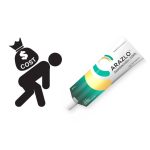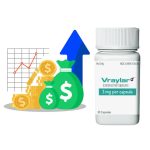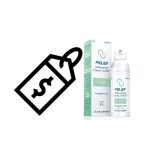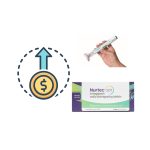Why Is Carafate So Expensive?
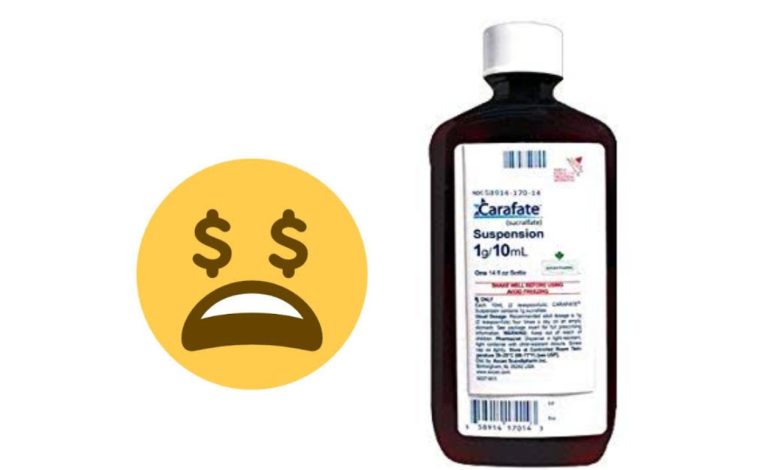
Carafate, known by its generic name sucralfate, is a pharmaceutical compound that plays a pivotal role in the management and prevention of gastrointestinal ulcers. Functioning as a mucosal protectant, Carafate intervenes in the healing process of ulcers situated in the stomach and intestines. This medication exerts its therapeutic effect by forming a viscous, adhesive layer over the ulcerated areas. This protective coating acts as a barrier against corrosive substances present in the gastrointestinal tract, particularly stomach acid and other irritants, thereby fostering an environment conducive to ulcer healing.
This drug finds extensive application in the treatment of various gastrointestinal conditions, including peptic ulcers, gastritis, and gastroesophageal reflux disease (GERD). Peptic ulcers, characterized by erosions in the lining of the stomach or upper part of the small intestine, can result from factors such as infection with Helicobacter pylori bacteria, prolonged use of nonsteroidal anti-inflammatory drugs (NSAIDs), or excessive alcohol consumption. Gastritis, on the other hand, denotes inflammation of the stomach lining, which can manifest due to similar etiological factors. GERD, a chronic condition characterized by the reflux of stomach acid into the esophagus, can also lead to ulceration in the esophageal lining.
The administration of Carafate typically occurs orally, with patients commonly receiving it in the form of tablets or suspension. Oral ingestion facilitates the formation of the protective barrier within the gastrointestinal tract, providing sustained relief and promoting the healing process. However, for many patients, the price of Carafate is considered too high.
How much does Carafate cost?
The cost of Carafate can vary depending on factors such as the dosage form, quantity, and the pharmacy or retailer from which it is purchased. As of the latest available information, Carafate prices for the oral suspension, typically sold in a concentration of 1 g/10 mL, start at around $39.15 for a 200 milliliter (mL) bottle. It’s important to note that these prices are approximate and may vary depending on the specific location and pharmacy. Additionally, prices may be subject to change over time due to factors such as fluctuations in drug pricing and availability.
Why Is Carafate So Expensive?
Carafate notable effectiveness comes at a price—quite literally. Here are some of the factors contributing to the comparatively high cost of Carafate:
1. Limited Competition: Within the pharmaceutical landscape, Carafate is not subject to robust competition. It’s manufactured by a select few pharmaceutical companies, resulting in a scarcity of generic alternatives. With fewer options available, brand-name medications like Carafate often maintain higher price points due to the absence of competitive market forces that might otherwise drive prices down.
2. Patent Protection: Pharmaceutical companies frequently safeguard their products through patents, granting them exclusive rights to produce and distribute the medication for a designated period. Despite the potential expiration of Carafate’s patent, the presence of only a handful of manufacturers can still sustain relatively elevated prices. This exclusivity enables manufacturers to recoup substantial research and development investments incurred during the drug’s development phase.
3. Production Costs: The formulation of Carafate necessitates specific ingredients and manufacturing processes, which can contribute significantly to its production expenses. This unique formulation may entail intricate steps or specialized equipment, driving up the cost of production compared to more straightforward medications.
4. Specialized Formulation: Carafate’s therapeutic mechanism distinguishes it from other ulcer treatments. By forming a protective coating over ulcers, it facilitates the healing process. This specialized formulation and distinct mode of action necessitate precise manufacturing techniques and quality control measures, further elevating production costs and, subsequently, the retail price.
5. Insurance Coverage: While Carafate may offer relief to those suffering from gastrointestinal ailments, its expense can present challenges for patients seeking access to affordable treatment. Certain insurance plans may only partially cover Carafate’s cost or impose higher copayments, leaving patients to bear a greater financial burden. Consequently, individuals may face difficulties in accessing this medication due to cost-related barriers.
In sum, the confluence of factors such as limited competition, patent protection, production expenses, specialized formulation, and insurance coverage intricacies collectively contribute to the relatively high cost of Carafate. While it remains a vital therapeutic option for gastrointestinal disorders, its affordability remains a concern for patients and healthcare providers alike.
Can I get cheaper Carafate?
Yes, there are several strategies you can explore to potentially obtain Carafate at a lower cost:
1. Generic Options: While Carafate is a brand-name medication, sucralfate, its generic equivalent, is available. Generic drugs are typically less expensive than their brand-name counterparts. For example, the average cost for 1 Bottle of the generic sucralfate is about $13.42. You can ask your healthcare provider or pharmacist if a generic version of Carafate is suitable for your needs.
2. Shop Around: Prices for medications can vary between pharmacies. Consider calling different pharmacies in your area or using online comparison tools to find the best price for Carafate.
3. Manufacturer Discounts: Some pharmaceutical companies offer patient assistance programs or discounts for their medications. Check the manufacturer’s website or contact them directly to inquire about any available programs for Carafate.
4. Insurance Coverage Review: Review your health insurance plan’s coverage for Carafate. You may find that certain pharmacies or mail-order options are preferred by your insurance provider, which could result in lower out-of-pocket costs.
5. Prescription Assistance Programs: Non-profit organizations, government agencies, and pharmaceutical companies often offer prescription assistance programs for individuals who cannot afford their medications. These programs may provide Carafate at reduced or no cost to eligible individuals.
6. Ask About Alternative Therapies: Depending on your specific medical condition, there may be alternative treatments or medications that are less expensive than Carafate. Discuss your options with your healthcare provider to explore alternatives that are both effective and affordable.
7. Splitting Pills: In some cases, your healthcare provider may prescribe a higher dosage of Carafate, which you can then split into smaller doses to stretch your supply and reduce costs. However, not all medications can be safely split, so be sure to consult your healthcare provider or pharmacist before attempting this.
By exploring these options and discussing them with your healthcare provider and pharmacist, you may be able to find a more affordable way to obtain Carafate while still effectively managing your gastrointestinal condition.

